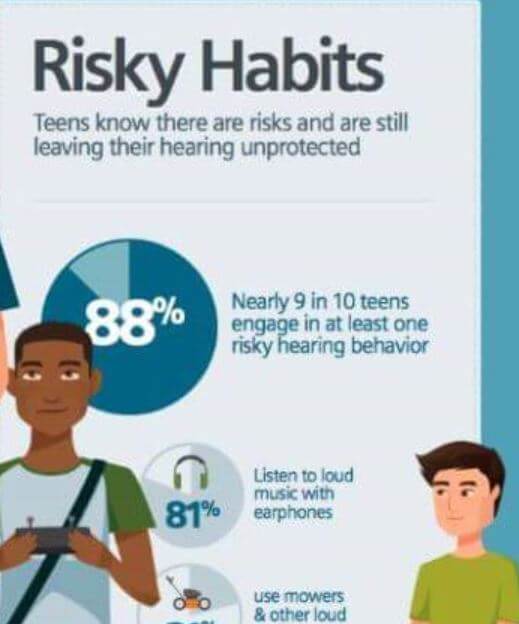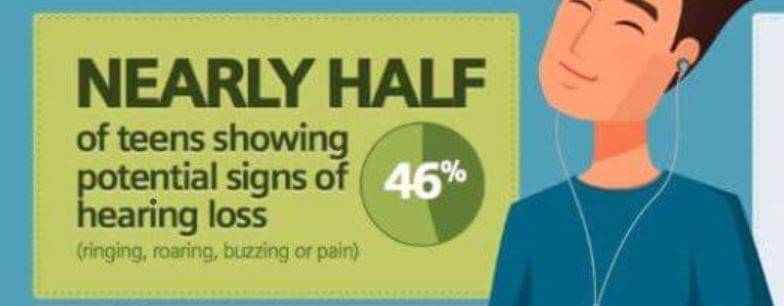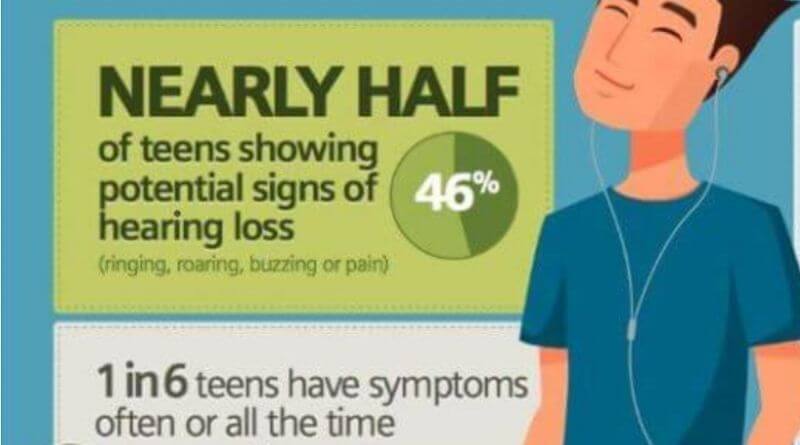The use of headphones has become a common scenario in everyone’s life. Ranging from kids, teenagers to adults, they all listen to their audio through their headphones. Once in a while, you ought to visit an audiologist to assess the state of your ears.
Are headphones damaging our ears?
It is an undeniable fact that each one has five senses. These senses are, namely, sight, hearing, smell, taste, and touch.
All these senses need protection for you to operate in all the environments productively. For that matter, hearing sense needs extra care to preserve your hearing throughout your life.
Prolonged use of headphones exposes the risk of hearing loss.
Take deliberate actions to prevent a hearing impairment for your hearing success.
According to statistics released by the World Health Organization (WHO) in 2015, 1.1 billion being teenagers and adults pose a risk of hearing loss through the unsafe use of headphones.
As you purchase the headphone, be cautious of all emerging dangers resulting from misuse. Let the stable health of your ears be a priority as you use the headphones.
The risk of high volume on hearing loss
The underlying cause of hearing loss is your exposure to noise. The more periods you expose yourself to loud sounds, the higher the risk you subject on your hearing.

When you are listening from a loud output source, the sound waves cause your eardrum to vibrate.
The several small bones within your ear transmit vibrations to the inner ear where it reaches the cochlea.
Since cochlea being a fluid-filled chamber in the ear, contains many thousands of small hairs.
Once the sound vibrations reach the cochlea, the fluid in your inner ear vibrates more.
As the sound goes higher, it results in stronger waves causing the hairs to move more.
Exposure to prolonged high sounds affects hair cells to lose their sensitivity to vibration leading to temporary hearing loss.
The hair cell usually recovers slowly from extreme fluctuations resulting from loud noise.
In worst-case scenarios, the cells never recover. Why? Because the damage may be severe to function, usually leading to lasting hearing loss.
Don’t you know that there is no cure for repairing a damaged inner ear?
The role of headphones on hearing damage
Headphones are potential agents that cause a noise-induced hearing loss. Prolonged usage of headphones produces sounds to cause hair cells in the cochlea to bend too severely.
There being no recovery, permanent damage is inevitable. Hearing loss can also occur when listening to headphones at a moderate volume over time.
Unsafe sound level
The length of exposure can harm your ears in the same way the loud noise does. The hazardous level of sound can be 85 decibels (dB) for eight hours or 100 dB for 15 minutes.
The level of your headphone volume plays a crucial role in the state of your hearing ability. As a rule of thumb, never exceed 60% of the maximum headphone volume.

Decibels decrease with distance. The closer you are to the source of the sound, the louder it is.
The hearing experts and audiologists recommend over-the-ear headphones instead of in-ear models like earbuds.
The extra distance between your ear and the speakers reduces the volume of the audio and helps prevent hearing damage.
What are the signs of hearing loss?
You probably use headphones daily as a routine. This practice has both advantages and disadvantages. Do you mind the state of your hearing ability?
Your actions to the exposure to loud sound can affect you. You are safe when you maintain low volumes in all your listening.
In extreme cases, when you listen to high volumes above the manufacture’s recommendations for an extended period, you pose a risk of hearing loss.
The following are signs that you may be losing your hearing ability:
- When you have to raise your voice to when talking.
- After removing your headphones, the speech around you sounds dull or muffled.
- You can’t hear or understand someone who is 3 feet away.
- Listening to radio or TV at a higher volume than the past.
- You have pain or a ringing sensation in your ears.
Prevention of hearing damage from headphones
Hearing loss is a health complication that you must strive to prevent. The primary reason is that your overall normal operations as a result of a hearing hitch should not stall.
The good news is that you can avoid hearing loss. You need adequate knowledge to prevent a hearing loss.
The following are proven methods that can assist you to eliminate hearing damage in your life:
Use noise-canceling earphones
Some people prefer using headphones to reduce other nearby sounds. Noise-canceling headphones can play a critical role in achieving this objective.
They have a modern technology that eliminates external noises from reaching your ears. They cushion you from feeling the impact of external sound as you enjoy your music or video at a lower volume with less interference.
Reducing the volume
The most important service you can offer to protect your ears is to turn down the volume of your devices. You will make your ears to function without any strain.
The primary cause of a noise-induced hearing loss is the exposure to loud sounds. Ensure that you operate your music audio at an acceptable limit.
To protect and preserve your ears, limit your exposure to high volumes. Always read the manufacturer’s manual to get proper guiding of this aspect.
Use the over-the-ear model
Avoid in-ear models and use over-the-ear models. To substantiate this point is that, the over-the-ear models increase the distance between your eardrums and the speakers, reducing the chances of hearing loss.
Limit your exposure time
As a principle, use “60-60 rule”. What does it mean? Don’t listen to any music louder than 60% of maximum volume for more than 60% at a time.
Hearing aid
When you damage your ears from headphone related noise, your ears may never heal completely. That doesn’t mean you will never hear again.
To restore your hearing ability, and make it easy to understand still, acquire a hearing aid from a licensed audiologist.
Which age group is at risk of hearing loss?
World Health Organization (WHO) released data statistics in 2015 from middle and high-income countries, which are sobering for all of us.
Youth and Teenagers
The results indicated that 50% among teenagers and young adults aged between 12-35 years are at risk of exposure to unsafe levels of sound.
This sound mostly comes from personal audio devices like headphones.
Furthermore, 40% expose themselves to potentially damaging levels of music at entertainment venues. Well, this is not a scare tactic but to create awareness of the potential danger of our ears.
Aging
During the aging process, there is a gradual loss of outer hair cell function in the inner ear.
Consequently, the process diminishes the ability to distinguish between similar speech sounds simultaneously. This process leads to hearing impairment.
Conclusion
Headphones play a crucial role in our society. The society no longer views them as a luxury but a necessary tool of communication.
As you are aware of the statistics, a reasonable number of individuals who expose themselves from uncontrolled use have a hearing loss. A generation with an increasing number of individuals who suffer from hearing damage is worrying.
It is my humble request that precautions necessary to prevent hearing loss becomes a priority to everyone.
When you are still enjoying good hearing, well and good. Take care of your ears. Suppose you are a victim of hearing damage, exercise caution, and be a signpost that others read from and avoid that route.
